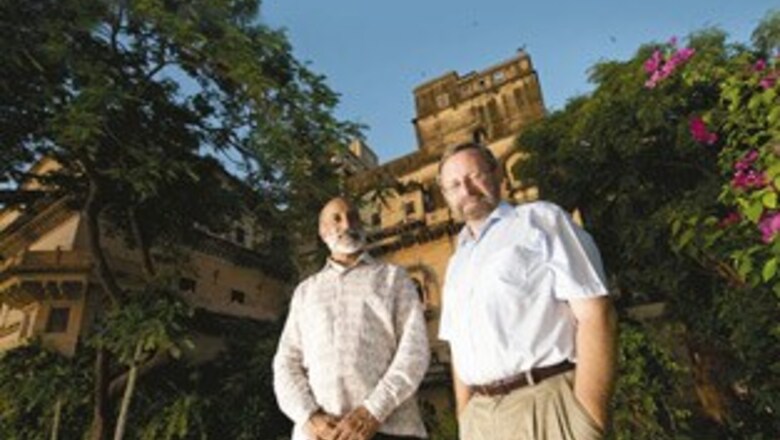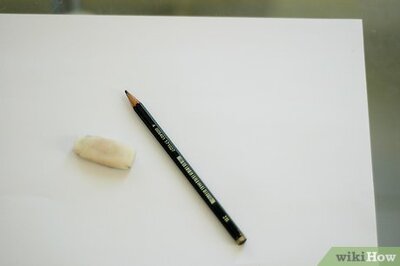
views
This isn’t the best of times to be a hotelier. The economic slowdown and the off-season for tourist business have made things difficult.
But Aman Nath, 58, and Francis Wacziarg, 67, aren’t complaining. On a sunny Saturday afternoon, about 120 km from Delhi, their flagship Neemrana Hotel is buzzing with people. All 55 rooms at the fort palace are booked. Day visitors swarm all over. Formally attired executives talk business in the corridors. The poolside is buzzing as foreign tourists sunbathe and children have fun. “Our weekends are packed--you need to book in advance,” says Nath.
In two decades, the 500-year-old fort palace has gone from ruins to a bustling heritage hotel, made possible by this unlikely duo. It was coincidence that brought Nath and Wacziarg together. The latter is a veritable citizen of the world. Born aboard a ship in the Caribbean Sea to a Turkish mother and a Jewish father fleeing to Cuba, Wacziarg had made India his home since 1969. He met Nath while on a filming trip to Rajasthan. A common passion for Indian heritage soon made them friends. Little did they expect what was to come next.
One day in the 1980s, Nath and Wacziarg, neither of them a hotelier, chanced upon Neemrana, an abandoned fort, while researching wall frescoes. The Maharaja of Neemrana had lost all his wealth. The villagers had looted the palace and the fort had been a crumbling wreck for more than 40 years. Nath-Wacziarg fell in love with the fort. They decided to acquire (for Rs 7 lakh in 1986) and restore it.
“But we had no idea what we wanted to do with it,” recalls Wacziarg. They tossed it in their head--may be a cultural centre or a time-share property. In the meantime, they began calling their friends over to stay. Soon, they were flooded with stay requests. In 1991, they opened it as a heritage hotel with 12 rooms.
And they have never looked back since.
What began as a quaint journey to salvage an abandoned 15th century fort has turned into a compelling business proposition today. Compelling not because of its scale and size, but because it offers a commercially viable solution to the problem of how to salvage and restore historical buildings, something the government and royals have struggled to find.
As the years rolled by, Nath-Wacziarg came to be known for converting heritage properties to profitable enterprises. This attracted many palace and fort owners--from the Punjab government to the graceful Pataudi couple--to hand over the royal residences under their care to these entrepreneurs.
The transfer of Baradari Palace in Patiala by Punjab was the first attempt at public-private partnership in this field but not the last. Last month, the Rajasthan government handed over the Tijara Fort on a 60-year lease. “It is in ruins. We just couldn’t do it. It will take at least five to seven years for them to restore it,” says Manjit Singh, who heads Rajasthan Tourism Development Corporation (RTDC).
The erstwhile Maharajas are signing up too. Thakur Mangal Singh, who handed over the 14th century Kesroli Palace in Alwar to Nath-Wacziarg says selling off the ancestral pride was never an option, but then he didn’t have the resources to manage it either. So, he handed it over to them in 1995 on a revenue share model. For Mansur Ali Khan Pataudi and his wife Sharmila Tagore, it was their hectic lifestyle that made them pass on their palace. “We were not able to manage and maintain it,” says the doe-eyed actress.
Nath-Wacziarg’s Neemrana group of hotels offers a unique business model to restore and maintain such properties. What they do is simple: In most cases, they take properties on long-term lease. In others, they either buy it or get somebody who can do it for them. Then they restore it in phases, opening up the restored portions to guests. The money earned in each stage is ploughed back into restoring the rest of the property. The complete restoration work can take years, but it works.
The way they do it
How do they pick properties? “We don’t. Often they pick us,” says Wacziarg. They have over 200 files of heritage properties waiting. Every day, they get at least a couple of email requests. While vetting, they look for history, accessibility from big cities and a “sense of arrival” where it must “feel like a different world”.
PAGE_BREAK
Many private equity firms have pursued them but they are steadfast in avoiding them. “I do not want that pressure to make money,” says Nath. He instead prefers investments from friends and references (some of them foreigners).
The company’s flexibility is its USP. The properties are small and of differing sizes from eight to 50-plus rooms and offer multiple management options. Some like Neemrana Fort were bought. Others are on flexi-lease options--from a lump sum annual payment at Tijara Fort to a range of revenue share contracts in others depending on how much financial burden owners are willing to share on the upkeep.
Today they manage 20 properties, six owned by them and the rest are leased.
Do they Make Money?
Yes they do. A typical hotel expects to recover money in seven to eight years but Neemrana’s properties do it in two-three years. “We are not terribly business-minded people. But we are not losers,” says Nath.
While restoration costs are high, they offset that by running a tight ship. They rely on internal accruals and have never taken a loan. (But their scale is not small. At their flagship Neemrana Fort, they have spent Rs 20 crore so far.)
Restoring and refurbishing are personally planned and overseen by Nath-Wacziarg themselves, so they save on consultant fee. While restoring, they work with local masons, often using traditional construction materials like lime and mortar. The focus on restoration--not reconstruction--helps them avoid unnecessary changes and keep the history intact.
Marketing is purely by word of mouth.
Their tiered tariffs--from Rs. 2,000 to Rs. 21,000 a night with breakfast-- targets a wide segment. Their hotels are minimalist--not luxurious but comfortable. Their USP is a “non-hotel hotel” where the service-facilities may not be five-star (there’s a TV room, but no TV in every room) but they promise an authentic Indian experience. Most of their staff is hired locally, do not have hotel management degrees and are groomed internally for their jobs. They may not have the five-star finesse but serve guests with certain warmth which is Neemrana’s differentiator.
All this helps keep costs and attrition low and helps cater to their unique positioning. “We do not want to treat our guests like a money-generating factory,” says Wacziarg.
An Evolving Gameplan
Nath-Wacziarg have learnt a few lessons on the way. Any property with less than 10 rooms does not make business sense. So in Coorg, in a property that had six rooms, they added four more and made it viable.
The Neemrana Fort best exemplifies their nimbleness. Initially, it largely catered to foreigners and NRIs. But steadily, the 70:30 ratio has turned into 35:65 today with more domestic travellers. They are now nurturing the weddings and official banquets segment. They hosted 17 weddings and 40 conferences last year.
To cater to that clientele, they have added facilities like amphitheatre (for ladies sangeet etal), swimming pool and wi-fi and conferencing facilities at their premises. Recently they added hot air balloon and zipping for a dash of adventure.
In many ways, Nath-Wacziarg’s personal passion and interests is helping fortify the Neemrana brand in the cultural and art space. Their NGO Khushii, which has 120 eminent artists and personalities from different fields as members, has organised collaborated painting events for charity. Their Neemrana Music Foundation hosted a Basant Bahar festival where eminent dancers and vocalists performed. The Writers’ Retreat at Neemrana, where top writers congregate, is famous.
The challenges
Neemrana operates in a market that is unexplored and commercially unattractive to big companies. When Tijara Fort was in need of a patron, 14 firms showed interest and only two submitted the bids. So competitive pressures are limited in this business. But there are logistical and administrative challenges of getting approvals given the government is one of the biggest owners of heritage buildings, says Nath.
PAGE_BREAK
There are internal challenges. The biggest being that the group is too dependant on Nath-Wacziarg. From property acquisition to restoring and managing them, they are too deeply and personally involved in every aspect of the business. Will they be able to institutionalise and create a leadership pipeline to take the journey forward? That’s a question that Nath-Wacziarg need to find answers to.
As the duo adds new properties, will they be able to logistically manage a big and expansive business? They are trying to address that question by setting up a school at Neemrana that will train 200-500 workers annually--some of them could be used for their own properties.
Upkeep and maintenance, of course, will be an issue. For example, at Neemrana Fort one can sense the monsoon dampness and seepages in many places. Logistically, managing the owners and keeping them happy will be critical. One of their premium-most property--Glasshouse in Haridwar--is coming up for lease renewal and automatic renewal isn’t guaranteed.
There are worries and there are challenges. But Nath-Wacziarg’s soft voices remind you of a different world. “We are doing what we deeply love. Managing a hotel and making money is secondary,” says Wacziarg. Their “time machine” is their first passion--business later. They are clear about that.


















Comments
0 comment